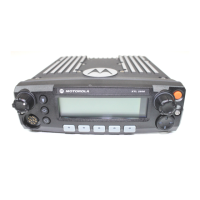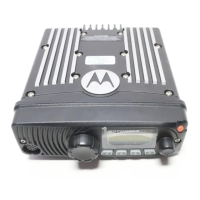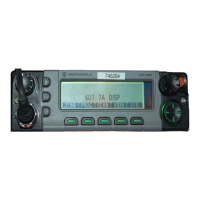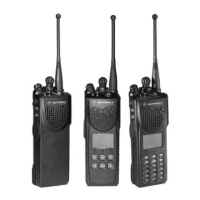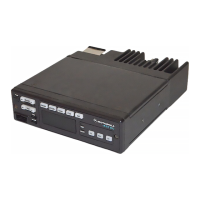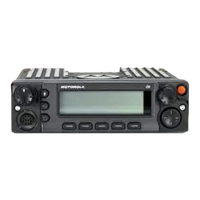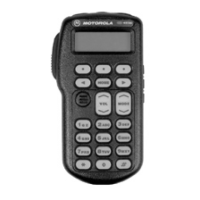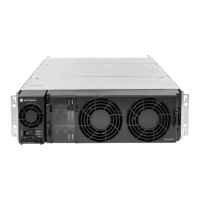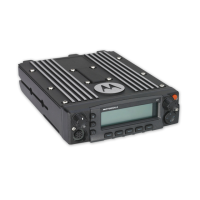June 11, 2003 6881096C73-O
3-10 Basic Theory of Operation: 700–800 Receiver Overview
3.10 700–800 Receiver Overview
The receiver circuits primary duties are to detect, filter, amplify, and demodulate RF signals in the
presence of strong interfering noise and unintended signals. The receiver is broken down into the
following blocks:
• Front-end (preselector and LNA)
•Mixer
•IF
• Back-end IC
3.10.1 Receiver Front-End
The 700–800 MHz receiver front-end operates in two bands. The primary function of the front-end is
to optimize image rejection and selectivity while providing the first conversion. The front-end uses
ceramic filter technology and includes a wideband, monolithic amplifier. The first filter is a dual
switched filter that reduces the image frequency response and limits some of the out-of-band
interference. The second filter following the monolithic Low Noise Amplifier (LNA) provides additional
image rejection.
3.10.2 Mixer
The signal is then fed to the monolithic Mixer IC where it is down converted to an IF of 73.35 MHz.
The mixer is designed to provide low conversion loss and high intermodulation performance. The
mixer is driven by the receiver injection buffer, a two-stage discrete IC design used with the receiver
VCO to efficiently drive the mixer over a wide temperature range with minimum power variation. The
injection buffer provides 15 dBm to the mixer. The VCO performs low-side injection for the 800 MHz
band and high-side Injection for the 700 MHz band. The design maintains temperature stability, low
insertion loss, and high out-of-band rejection.
3.10.3 IF Circuitry
The crystal filters provide IF selectivity and out-of-band signal protection to the back-end IC. Two 2-
pole crystal filters centered at 73.35 MHz that are isolated from one another by a stable, moderate
gain amplifier are used to meet the receiver specifications for gain, close-in intermodulation
rejection, adjacent-channel selectivity, and second-image rejection.
3.10.4 Abacus III Back-End
The output of the IF circuit is fed directly to the Abacus III digital back-end IC. The ABACUS III is an
IC with a variable-bandwidth bandpass Sigma-Delta architecture. It is capable of down-converting
analog as well as digital RF protocols into a baseband signal transmitted on the Synchronous Serial
Interface (SSI) bus. The Abacus III IC converts the 73.35 MHz signal from the IF section down to
2.25 MHz using a second LO frequency of 71.1 MHz or 75.6 MHz. The second LO VCO is tuned to
71.1 MHz (low side) or 75.6 MHz (high side injection). The choice of frequency depends on known
spurious interference related to the programmed received frequency.
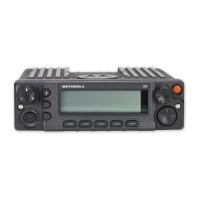
